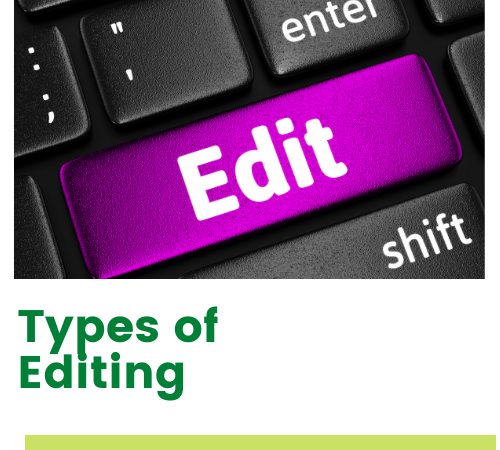
Terms used in editing can be perplexing for a novice author, particularly since the terms often interchanges and may have varying connotations within the industry. Understanding the types of editing is crucial for every writer or author, editor, and those individual in the publishing industry.
Here are the types of editing and their definitions:
Copy Editing/ Copyediting
Modifying written content increases readability and ensures that the content has no factual and grammatical errors.
Based on Chicago Manual Style, this ranges from basic technical modifications to extensive remedial work clarity. And literary style, unorganized sections, confusing figures and tables, and the like.
Content Editing
It is a comprehensive, heavy, macro, or substantive editing. It is a kind of copy editing that assesses a material’s general formatting, content, and style to enhance its visual appearance and readability. Comprehensive editors are a subset of linguists.
Line Editing
Focuses on the manuscript’s substance, use of language, and writing style. A skilled line editor may highlight portions subject to improvement. Areas where the style is uneven, pacing concerns, or excessive usage of specific phrases and words throughout the material. It may assist the author in developing their abilities by increasing their awareness of writing patterns that may be modified in the future.
Developmental Editing
It is a kind of writing assistance that occurs before or during the preparation of publishable work. Scott Norton explains in his book Developmental Editing: A Handbook for Freelancers, Authors, and Publishers that developmental editing entails major reorganization or rebuilding of the discourse of a text.
A developmental editor may assist an author (or group of writers) with conceptualizing the subject, organizing the general framework, and drafting an outline—as well as coaching writers chapter by chapter through the writing process (this is actually developmental editing, although it is not the most often used method). A developmental editor determines that the writer’s manuscript needs significant rewriting and reorganization.
Proofreading
Proofreading is the final step in the writing process; it entails thoroughly examining the material for mistakes (grammar, spelling, formatting, typographical errors, and consistency) prior to it being published or shared. It is critical for any material (academic papers, internet articles, books, brochures, etc.) intended for the public. An author or writer may proofread their material themselves or engage with a professional editor.
Are you looking for a literary agent? Handing your book to publishers is a daunting task. However, companies like Quantum Discovery can help you with your needs when it comes to having your book delivered to the right publisher. Contact our professionals by calling (888) 755-6875 or visit quantumdiscovery.net to know more.
